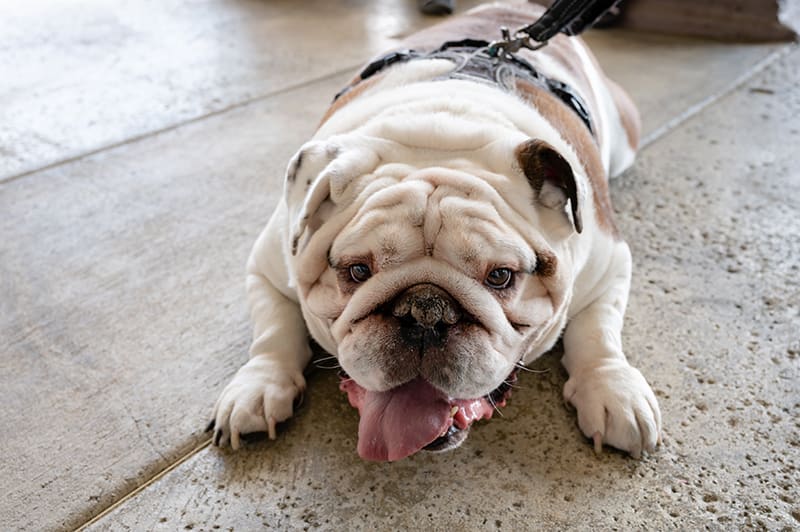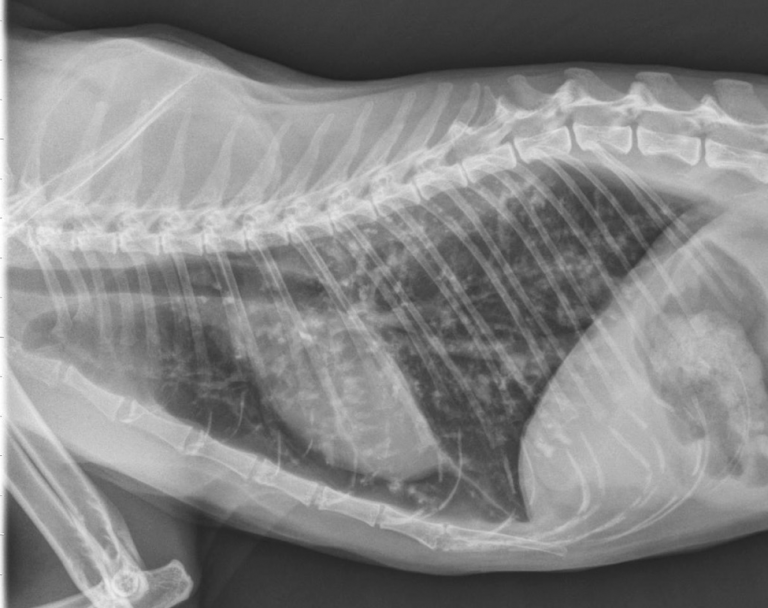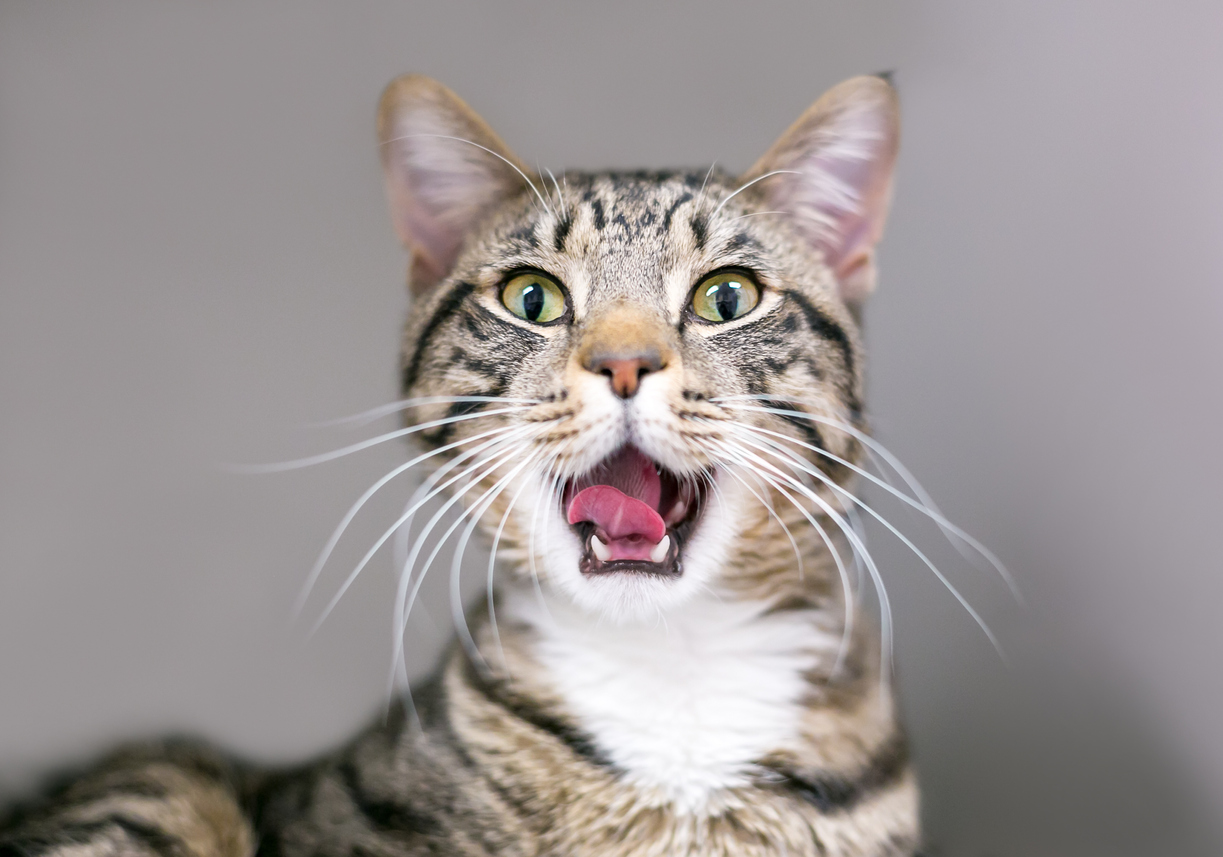Dyspnea
What is Dyspnea?
Dyspnea is a condition whereby an animal experiences respiratory distress or difficult breathing. Dyspnea may be acute or chronic and is historically associated with signs including coughing, rapid breathing and exercise intolerance. Dyspnea mainly affects the respiratory system.
What are the causes?
Dogs and cats with respiratory related diseases are more prone to experiencing dyspnea. These include diseases involving the body cavity (pleural space, thoracic wall, diaphragm), upper/lower airway disease, pulmonary parenchymal disease and abdominal distension.

What are the clinical signs?
Upon clinical examination, the most significant signs of Dyspnea include the following:
- Increased abdominal effort
- Open mouth breathing
- Nasal flaring
- Rapid respiratory rate.
Other clinical signs of Dyspnea depend on their underlying cause.

What tests are involved?
To properly diagnose, there are a few tests involved:
Complete blood count (CBC)/biochemistry – to look out for specific conditions
X-rays/ultrasound – visualize involved structures
Faecal examination – to look out for lung parasites
How is it treated?
Treatment is determined by the underlying cause and may involve oxygen therapy, antibiotics/medication or surgical intervention.
How do I know if my dog or cat is having difficulty breathing or shortness of breath?
As a pet guardian, you have to be able to observe the difference between dyspnea and tachypnea, because dyspnea is a life-threatening emergency. Most of the time pets are tachypneic first, which can serve as your first clue that dyspnea may be on the way.
What signs does a pet show when they are having difficulty breathing? Clinical signs differ slightly between dogs and cats:
Cat signs include the following:
An increased respiratory rate > 40 breaths per minute (bpm)
Hunched over in sternal
Hiding
Coughing (which sounds like “hacking” up a hairball)
Open mouth breathing (unless it’s a stressful event like a car ride, this is always abnormal as cats always prefer to breathe through their nostrils)
Blue-tinged gums
Foam or froth coming out of the mouth
Dog signs include the following:
Constant coughing, especially at night
Exercise intolerance (for example, and most notably, when you take them for a walk)
An increased respiratory rate > 40 bpm
A change in bark, where it sounds more hoarse
Anxiety, restlessness, pacing
Constant panting
Stretching the neck out to breathe
Sitting up to breathe, with the front legs/elbows spread out (like a English bulldog stance) to breathe
Using the abdomen to breathe better (you’ll notice the sides of the belly heaving in and out more)
Blue-tinged gums
Foam or froth coming out of the mouth
Note that this list of signs isn’t all-inclusive, but if you notice any of these signs, a visit to the veterinarian or emergency veterinarian is a must.
Why is my dog or cat having difficulty when breathing?
Difficulty breathing can typically be linked to the following anatomical locations in the body:
Upper airway (i.e., the throat, larynx, or pharynx area)
Lower airway (i.e., the trachea and lungs)
Pleural space (i.e., the area surrounding the lungs)
Lung parcenchyma (i.e., the lungs)
Chest wall (i.e., the ribs and associated muscles)
Diaphragm
Look-a-likes are problems that often make it look like your pet is having difficulty breathing and may include severe pain, abnormal oxygen levels in the red blood cells, stress, hyperthermia, metabolic abnormalities, drugs, neurologic problems, shock, etc.
Assuming the issue isn’t a look-a-like, causes of difficulty breathing in dogs and cats include the following:
Asthma (in cats)
Infectious diseases (e.g., kennel cough pneumonia, canine influenza, upper respiratory infections, etc.)
A problem in the pharynx or upper airway (such as a polyp growing in the oropharynx in young cats, or a cancerous growth growing in the airway in dogs or cats)
Heart failure
Chronic bronchitis (in dogs)
Cancer
Metabolic problems (e.g., gastrointestinal problems resulting in a low protein in the body and fluid accumulation in the chest and abdomen, kidney failure, etc.)
Laryngeal paralysis, which is a narrowing of the airway (predominantly in dogs)
Pneumonia (which can be due to aspiration or inhalation of vomit into the lungs, or infectious causes like bacteria or fungal infections within the lung)
Bleeding into the lung (often seen in dogs secondary to getting into anticoagulant mouse and rat poison)
Trauma (e.g., lung bruises [pulmonary contusions], abnormal air leaking into the chest cavity [pneumothorax], rib fractures, a diaphragmatic hernia [tear in the diaphragm resulting in abdominal organs entering the chest cavity])
Pulmonary embolism (e.g., a blood clot to the pulmonary vessels that results in sudden death and difficulty breathing)
Numerous other causes

How will my veterinarian help my dog or cat to breathe?
If your pet has difficulty breathing, diagnostic tests and treatment that your veterinarian may perform include the following:
Oxygen therapy
Life-saving stabilization
Possible IV fluids
Medication to help your pet breath better (which may include bronchodilators [lung expanders], steroids [to reduce inflammation from asthma], diuretics [to remove water from the lung], etc.)
Blood work (to evaluate the white and red blood cells, platelets, kidney and liver function, electrolytes, and clotting ability)
Monitoring of the blood oxygen levels (e.g., with a pulse oximetry [a device that non-invasively monitors how much oxygen is being carried by the red blood cells] or an arterial blood gas [a sample of the blood from the artery])
Chest x-rays (to look at the appearance of the trachea, ribs, lungs, diaphragm, etc.)
Abdominal x-rays (to rule out other underlying problems in the abdomen)
An electrocardiogram (to look at the rhythm of the heart)
Echocardiogram (an ultrasound of the heart to rule out underlying heart disease)
What is the prognosis for difficulty breathing?
Unfortunately, the prognosis for survival from difficulty breathing varies with what the underling problem is, financial constraints (which may limit treatment options), and severity of the disease. In the case of trauma or bleeding into the lungs from mouse and rat poison, the prognosis is better, as long as prompt, aggressive therapy and treatment can be initiated. With certain diseases like pneumonia, the prognosis is fair with treatment but with cancer, the prognosis is poor to grave.
When in doubt, seek veterinary attention and a full work up as soon as you notice any trouble breathing. Keep in mind that pets often don’t show clinical signs until those signs are very severe, and any signs listed above warrant a trip to the veterinarian. The sooner you notice a problem, the sooner we can treat it and potentially the better the outcome.
If you have any questions or concerns, you should always visit or call your veterinarian -- they are your best resource to ensure the health and well-being of your pets.


